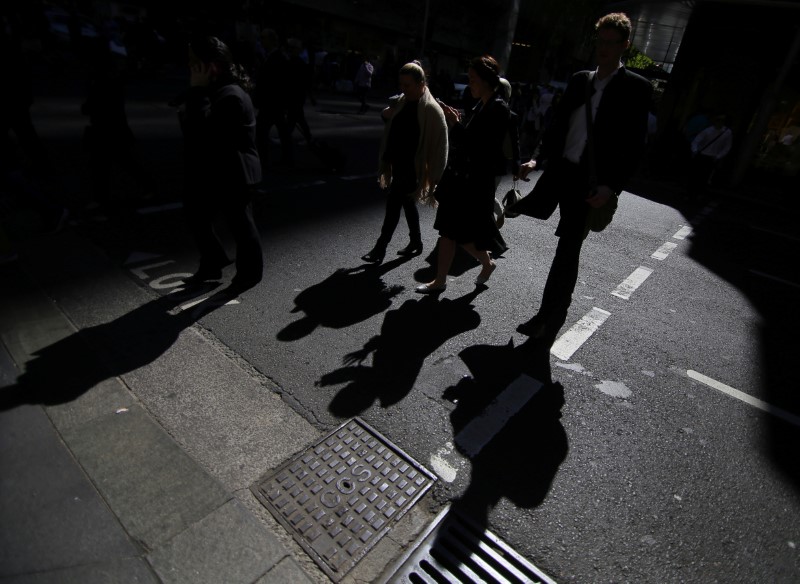 © Reuters. Office workers cross a street in Sydney
© Reuters. Office workers cross a street in SydneySYDNEY (Reuters) – Australia enjoyed another month of solid jobs growth in September, with the annual pace of gains sprinting ahead to the fastest in almost a decade and nudging the unemployment rate lower.
Data out on Thursday showed the unemployment rate slipped to 5.5 percent, compared with analysts’ expectations for a steady 5.6 percent. That was the lowest reading since May, which itself was the lowest since early 2013.
Employment climbed a seasonally adjusted 19,800 in September, again topping forecasts for a 15,000 rise, and marking 12 straight months of gains.
Annual jobs growth zoomed ahead to 3.1 percent from an already rapid 2.7 percent. Such a pace would be equivalent to an annual rise of 4.5 million in U.S. payrolls.
That took jobs gains for the year so far to 371,500, led largely by strength in the healthcare, construction and education sectors.
The composition of the data was promising too. While more part-time work was created in September, about 85 percent of jobs added in the past year have been full-time positions.
“Annual growth in full-time jobs was 3.9 percent, which is extraordinary,” said Michael Workman, a senior economist at CBA.
“Yet, a lot of the increase is in areas such as healthcare and tourism, which are at the lower end of the wage scale,” he added. “That means the total income effect of all these jobs is less than in past booms, and it is a lot more benign for inflation.”
At the same time, the workforce participation rate is also the highest since 2012 at 65.2 percent, meaning the proportion of people actively looking for work has expanded too.
That slack in the labor market is keeping wages growth near record lows and restraining inflation, which is stuck under the central bank’s target band of 2-3 percent.
The Reserve Bank of Australia (RBA) has held rates at 1.50 percent for more than a year as it balances soft domestic demand and inflation against escalating household debt.
The Australian dollar
Economists expect hiring to remain elevated in the coming months, led by massive infrastructure spending by the government, public expenditure on healthcare and generally upbeat business surveys.
“However, the abundance of spare capacity already in the labor market means that even if jobs growth remains strong there will be plenty of slack for some time yet,” said Kate Hicki, Sydney-based economist at Capital Economics.
“This explains why we expect wage growth to remain around 2 percent throughout the next year despite recent improvements in the jobs market.”
Fusion Media or anyone involved with Fusion Media will not accept any liability for loss or damage as a result of reliance on the information including data, quotes, charts and buy/sell signals contained within this website. Please be fully informed regarding the risks and costs associated with trading the financial markets, it is one of the riskiest investment forms possible.
Source: Investing.com



























